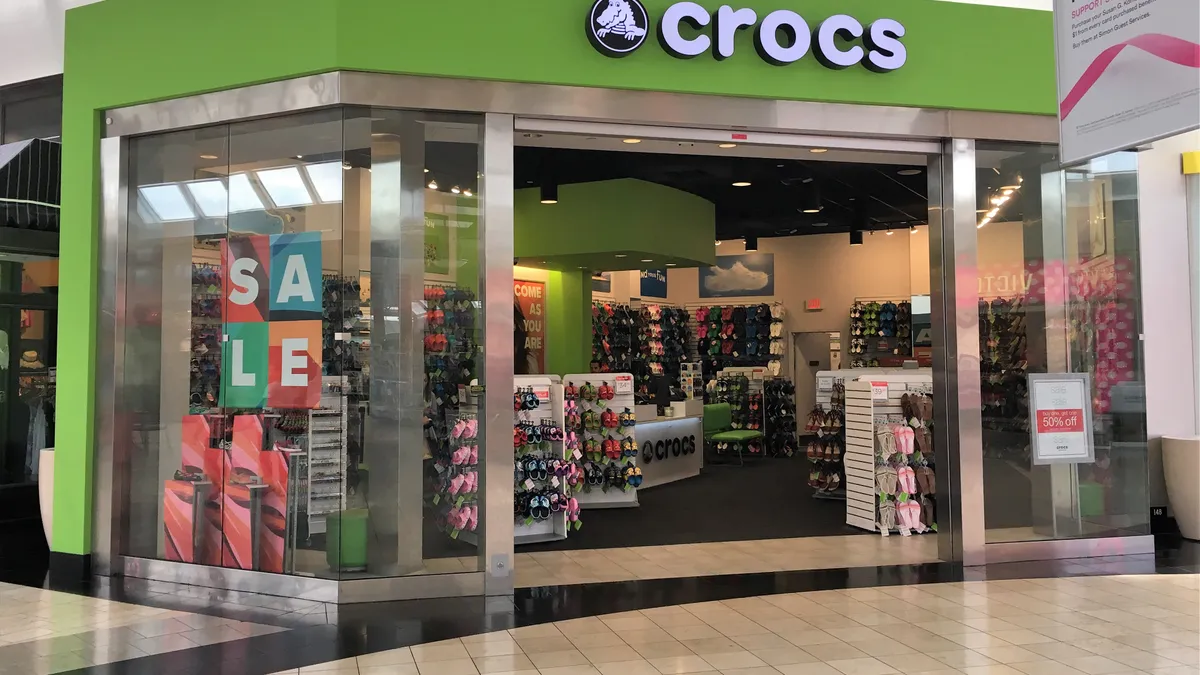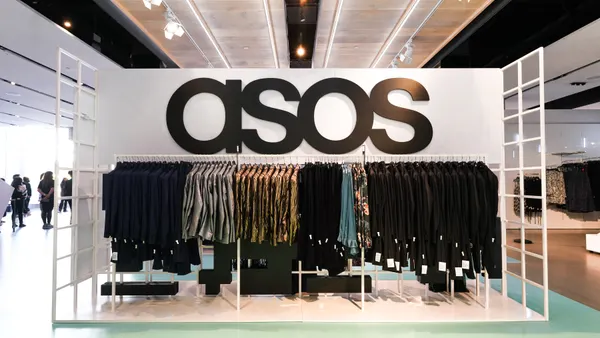Dive Brief:
- Crocs has been working to control the flow of unauthorized inventory to what executives label “gray market” channels, which include Amazon’s website.
- Based on the footwear company’s visibility into those channels, gray market inventory has improved since June and the company expects to be “in a substantially better position in the first-half of 2024,” CEO Andrew Rees told analysts on the company’s Q3 earnings call last week.
- Crocs is also focused on controlling inventory across its business, including wholesale channels. The company has proactively canceled prior wholesale orders to reduce inventory flows while also “supporting our wholesale partners with some inventory cleanup” through returns and company funding for markdowns, Rees said.
Dive Insight:
To control prices, margins and its brand, Crocs is controlling the flow of its inventory to every channel it can.
The company has made significant progress. Companywide inventories fell 24% year over year in the quarter, and are down 17% from the end of 2022.
“Year-to-date, we have made considerable progress in cleaning up our inventory and are pleased that our Heydude inventory ended down 41% from Q3 last year,” Reese said. CFO Anne Mehlman also noted that inventory turns continued to improve and that “we are very pleased with the health of our inventory.”
Still, the company has troubles in pockets. Rees said the company saw more carryover inventory in its legacy customers than expected, diluting Crocs’ product offerings.
Crocs has also made progress plugging the sale of unauthorized inventory.
Trailing 12-month revenue for the Crocs brand was up 11% YoY even as the brand sold 29 million pairs of shoes, down 4% from last year. The unit decline was tied to “corrective actions” the company took last quarter to curtail “a significant African distributor that we believe was diverting goods to the U.S. gray market,” Mehlman said on the call.
Getting a handle on gray market inventory is key to Crocs’ ability to control prices across channels and markets for its products. After the company closed many of its international distributors, some of the excess inventory started to show up on Amazon, Rees said.
In the past, Crocs competed with gray market sellers on price to capture its “fair share” of sales and market share, Rees said. The company has since stopped price matching on Amazon, which has hurt revenue expectations but has increased profitability and is better for the company’s wholesale partners as well, Rees noted.
“While this will hinder sales growth in Q4, and possibly into the first-half of next year, we believe this will set us up for a much cleaner marketplace as we move throughout 2024, as well as protect the brand,” the CEO said. He added later on the call, “We're hoping that gray market inventory sells out quickly, and we can reset the digital market.”














